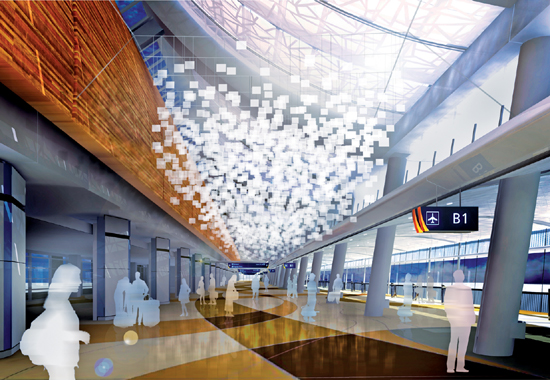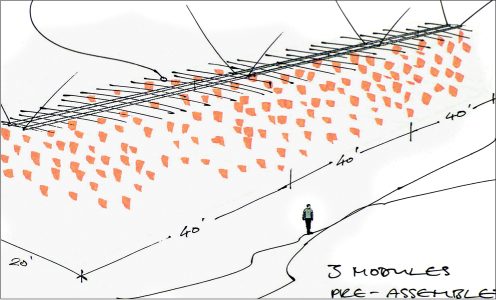GRAPHIC DESIGN HAS LEFT THE PAGE TO CONQUER OBJECTS, SPACES, MOTION, AND INTERACTION.
I have great visual curiosity; I get inspired when I discover design solutions by nondesigners and when I visit extreme places like the desert and places of rapid change like emerging cities. I also draw inspiration from conversations, articles, movies, conferences, and lectures.
Inspiration also comes from collaboration with people of a complementary creative wavelength, often in discussion and brainstorming sessions with sketching in real time.
I take a lot of photos, but edit them rigorously for visual or conceptual interest. However, I rarely go back to documented inspirations; if ideas are powerful, they tend to linger in my memory for quite a while.
I prefer looking at creative work that is not directly related to my discipline. Transferring inspiration from other areas, such as fine art, science, or engineering, yields more surprising results for me. Graphic design is more than ink on paper. It has left the page to conquer objects, spaces, motion, and interaction. Graphic design has evolved into communication design, transcending and blending all media categories.
The eCloud installation project at the San Jose (California) airport building has confirmed my belief in creative collaboration across various disciplines. If the chemistry is right, conceptual ideas can augment each other in a creative process. Creative challenges of greater complexity benefit from shared input. The idea, concept, and design evolved in an intensive artistic collaboration between me, Dan Goods of JPL/NASA, and Aaron Koblin, an artist who specializes in experimental data visualization. We used this situational construct, both client-requested and self-generated, as our blueprint to create a visually stimulating and engaging solution.
Starting from the premise of creating a dynamic suspended sculpture that is visualizing abstract data streams, the idea of a cloud evolved organically out of our creative collaboration. Before we arrived at the smart glass pixels, we experimented with three-dimensional arrays of white LEDs, but discarded this idea because it would not produce enough visual impact and would have looked too expected. We also experimented with various spatial configurations and suspension principles before we arrived at the current solution.
Since this project is a public art commission, we had to go through a complex request for qualification (RFQ) process with the City of San Jose art program. Dan, Aaron, and I were selected as an artist collective based on our individual creative backgrounds that combined experience in engineering, data visualization, visual storytelling, public installations, and narrative spaces.
The idea for eCloud is our creative answer to the airport’s briefing asking for an installation that would mitigate the visually condense environment of the concourse building and serve as a landmark at the gate to Silicon Valley.
The pixels are arranged to simulate a dispersed cloud suspended from the concourse ceiling structure. The core volume of the piece is 16 feet × 12 feet × 108 feet (4.9 × 3.7 × 33 m) and the pixels are hung from a tensile structure.

eCloud is a dynamic sculpture inspired by the volume and behavior of an idealized cloud. Clouds are ephemeral and in perpetual transformation; their abstract shapes are constantly teasing the mind of the observer to “see” and interpret. Clouds focus our attention on the sky and connect us with our fascination with flying.
The animations that move through eCloud are based on changes in weather data. The National Oceanic and Atmospheric Administration runs a live feed of weather and wind conditions for all airports in the United States. Unique animations are displayed through the sculpture as guided by the weather at different destination airports.


 ART CENTER COLLEGE OF DESIGN
ART CENTER COLLEGE OF DESIGN